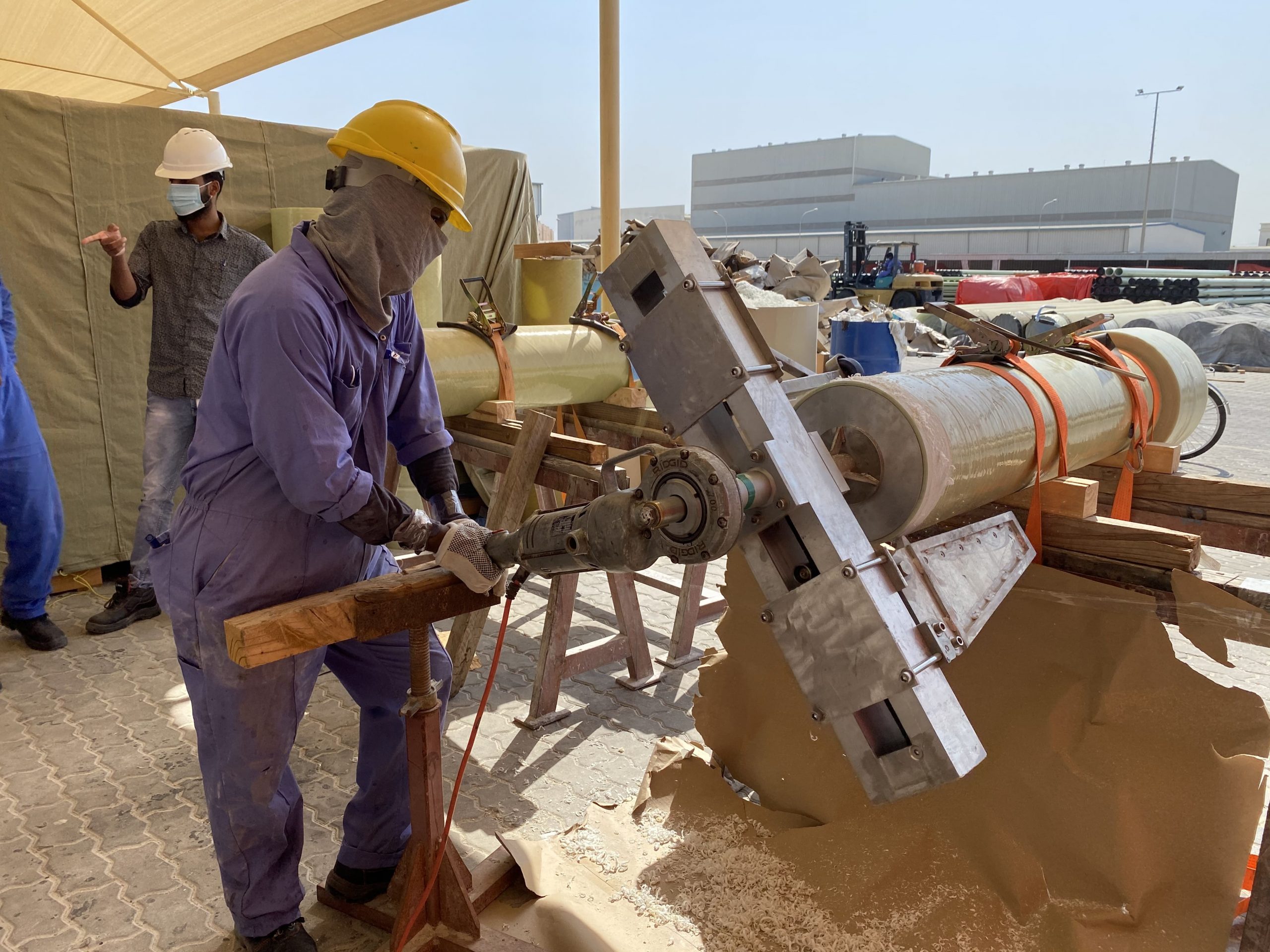About :
Polyester resins are commonly used to produce large-diameter water and sewage piping. Polyesters have excellent water and chemical resistance and are noted for acid resistance. Polyester resins are cured by organic peroxide catalysts. The type and amount of catalyst will influence gel time, cure time, curing temperature, and the degree of cure. Iso phthalic polyester resin is typically used. Iso phthalic polyester is a relatively low-cost resin, with limited chemical resistance.
CPI provides GRP pipes and fittings which are to be used for General applications like Sewerage pipelines, Potable water, etc. CPI has a big advantage of having in-house design capability along with the manufacturing unit of the GRP piping System. Production difficulties encountered along with effective quality system provides the necessary input to design to take into account and make necessary changes to the GRP product design to provide an economical and reliable product which meet the customer requirement up to the highest level of customer satisfaction. CPI engineering team involves to prepare the technical offer in compliance with client requirements. We prepare the Raw material breakup based on co-ordination with the costing team to understand the cost impact of various product options and select the most cost effective and optimized product. Based on Raw material selection we recommend to perform the qualification test as per international standard or any other customer-specified standard and specification
GRP materials are considered as Orthotropic, which is a subset of anisotropic materials. Their properties depend on the direction in which they are measured. They have three planes/axes of symmetry. Their design life extends to Minimum design life of 20 to 30 years. The diameter ranges from 80 to 4000 mm. The use of Iso phthalic resin makes our product ideal for the usage of temperatures up to 60 deg Celsius. The thermal conductivity of GRP is comparatively lesser than GRE. The GRP pipes have High Durability, Lightweight, Low Cost, and Long Life. The easy installation procedures and good mechanical, chemical resistances will make GRP a better option for the purposes. The Smooth interior of pipes makes the pumping cost to a minimum and long transmission of liquid. The main utilities of GRP are Drinking water, Seawater intake, Desalination plants, untreated water, sewage water, Sanitation system pipelines, etc.
CPI has a variety of products to satisfy various needs of the changing environments. The material selection process shall ensure that the material is compatible with the service fluids to which it is exposed over the full design temperature range so that the mechanical, physical, and chemical properties of the GRP satisfy the design requirements throughout the intended lifetime. CPI shall provide the details of the raw materials and resin systems intended to be used for the project during the technical bid stage for the company Review and acceptance. Fiberglass pipe is a composite material system produced from glass fiber reinforcements, thermosetting plastic resins, and additives. By selecting the right combination and amount of materials and the specific manufacturing process, CPI can create a product to meet the most demanding requirements. The glass fibers most commonly used in the pipe are referred to as Types E, ECR, and C. Glass types ECR and C provide improved acid and chemical resistance. Type C glass fibers are generally only used to reinforce chemical-resistant liners. CPI is offering various types of bonded and mechanical joints for the GRP piping system.
Capacity :
Chemical resistance of FRP material :
| Fluid Type | GRE Aliphatic | GRE Aromatic | GRE Anhydride | GRV Vinyl ester | GRP Polyester |
| Acids | X | X | X | ✓ | X |
| Alkalis (Caustic) | ✓ | ✓ | X | ✓ | X |
| Solvents (BTX) | ✓ | ✓ | X | X | X |
| Water Sea/Brackish | ✓ | ✓ | ✓ | ✓ | ✓ |
- Adhesive-bonded joints, (conical bell & spigot)
- Laminated joints (butt & wrap joint)
- Mechanical O-ring bell-and-spigot elastomeric seal joints (key – lock joint)
- Flanged joints;
- Threaded joints
- Metallic/GRP interfaces.
| Fluid Type | Normal Flow m/s | Maximum Intermittent Flow m/s |
| Liquid | 1-5 | 10 |
| Gas | 1-10 | 20 |
| Property | Test Method | GRP | Units |
| Axial Tensile Modulus | ASTM D 2105 | 13000 | MPa |
| Hoop Tensile Modulus | ASTM D 2290 | 24000 | MPa |
| Modulus @ 23C | 2100-3450 | MPa | |
| Strength @ 23 C | 34.5-103.5 | MPa | |
| Cure Shrinkage (%) | 5-12 |
| Property | Test Method | Tolerable stress | Unit |
| Axial Tensile Stress | ASTM D 2105 | 35 | Mpa |
| Hoop Tensile Stress | ASTM D 2290 | 250 | MPa |
| Poisson’s Ratio | ASTM D 2412 | 0.41 | – |
| Hydrostatic Design Basis | ASTM D 2992 | 132 | MPa |
